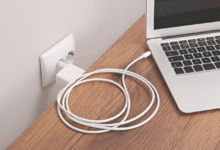The Role of Connected Wearable Devices in Healthcare

Benefits of Connected Wearable Devices in Healthcare
Connected wearable devices offer several benefits that contribute to improving healthcare outcomes. Firstly, they enable the monitoring of various health parameters in real-time, providing individuals with valuable insights into their well-being. By continuously tracking metrics such as heart rate, blood pressure, and activity levels, these devices empower users to take proactive measures to maintain their health.
Moreover, connected wearable devices facilitate early detection of health issues by alerting users to abnormal trends or symptoms. For example, a sudden increase in heart rate or a drop in oxygen saturation levels could indicate an underlying health problem, prompting users to seek medical attention promptly. This early detection can potentially prevent complications and improve treatment outcomes.
Additionally, connected wearable devices enhance patient engagement and compliance by making healthcare more accessible and interactive. Through features such as reminders, goal-setting, and progress tracking, these devices motivate users to adopt healthier habits and adhere to treatment plans. By actively involving individuals in their care, wearable devices empower them to take control of their health and well-being.
Applications of Connected Wearable Devices in Healthcare
The applications of connected wearable devices in healthcare are diverse and encompass various aspects of health and wellness. One of the primary uses is remote patient monitoring, which allows healthcare providers to monitor patients’ vital signs and symptoms from a distance. This is particularly valuable for individuals with chronic conditions or those recovering from surgery, as it enables early intervention and reduces the need for frequent hospital visits.
Connected wearable devices also play a crucial role in chronic disease management by facilitating continuous monitoring and self-management. For example, individuals with diabetes can use wearable glucose monitors to track their blood sugar levels throughout the day, enabling them to make informed decisions about diet and medication. Similarly, patients with hypertension can benefit from wearable blood pressure monitors that provide real-time feedback on their cardiovascular health.
In addition to medical applications, connected wearable devices are widely used for fitness and wellness tracking. From step counters and calorie trackers to sleep monitors and stress sensors, these devices offer insights into various aspects of physical and mental well-being. By encouraging users to stay active, eat healthily, and manage stress effectively, wearable devices promote overall wellness and disease prevention.
Challenges and Limitations
Despite their numerous benefits, connected wearable devices also pose several challenges and limitations that need to be addressed. One of the primary concerns is data security and privacy, as these devices collect sensitive health information that could be vulnerable to breaches or unauthorized access. Ensuring robust encryption protocols and compliance with data protection regulations is essential to safeguarding users’ privacy and confidentiality.
Another challenge is the accuracy and reliability of data generated by wearable devices, as discrepancies or inconsistencies could lead to inaccurate health assessments or recommendations. It is crucial for manufacturers to validate the performance of their devices through rigorous testing and calibration to ensure the accuracy of the data they produce. Additionally, healthcare providers need to interpret this data within the context of clinical guidelines and patient preferences to make informed decisions about diagnosis and treatment.
Integration with existing healthcare systems poses another challenge, as interoperability issues could hinder the seamless exchange of data between wearable devices and electronic health records. Standardizing data formats and communication protocols is essential to ensuring compatibility and interoperability across different platforms and devices. Moreover, healthcare providers need adequate training and support to effectively utilize wearable technology and integrate it into their practice.
Cost is also a significant limitation for widespread adoption of connected wearable devices, as these devices can be expensive and may not be covered by insurance plans. Lowering the cost barrier and increasing access to affordable devices is essential to ensuring equitable healthcare delivery and reducing disparities in health outcomes. Moreover, demonstrating the cost-effectiveness of wearable technology through robust evidence and research is crucial to securing reimbursement and investment in these devices.
Future Trends and Innovations
Despite the challenges, the future of connected wearable devices in healthcare looks promising, with ongoing advancements and innovations driving their evolution. One of the key trends is the development of more advanced sensors capable of capturing a broader range of health metrics with greater accuracy and precision. From continuous glucose monitoring to non-invasive blood pressure monitoring, these sensors enable more comprehensive health assessments and personalized interventions.
Furthermore, the integration of artificial intelligence (AI) and machine learning algorithms holds great potential for enhancing the capabilities of wearable devices. By analyzing large volumes of data and identifying patterns or trends, AI algorithms can provide valuable insights into users’ health status and behavior. This enables more proactive and personalized interventions, such as predictive analytics for early disease detection or adaptive coaching for behavior change.
Another emerging trend is the expansion of wearable devices beyond monitoring to include diagnostic and therapeutic functionalities. For example, researchers are exploring the use of wearable biosensors for detecting biomarkers associated with various diseases, such as cancer or infectious diseases. Similarly, wearable devices equipped with therapeutic features, such as transcutaneous electrical nerve stimulation (TENS) for pain management, offer new treatment modalities for chronic conditions.
Regulatory Landscape
The regulatory landscape for connected wearable devices in healthcare is complex and varies depending on the intended use and classification of the device. In the United States, the Food and Drug Administration (FDA) regulates medical devices, including certain types of wearable technology. Devices intended for medical purposes, such as diagnosis, treatment, or prevention of disease, are subject to FDA oversight and must meet regulatory requirements for safety and efficacy.
Compliance with FDA regulations typically involves conducting clinical trials to demonstrate the safety and effectiveness of the device, obtaining FDA clearance or approval, and adhering to quality management standards. Manufacturers are also required to comply with post-market surveillance and reporting requirements to monitor the ongoing safety and performance of their devices. Failure to meet regulatory requirements can result in enforcement actions, including recalls, fines, or penalties.
Case Studies
Several case studies illustrate the successful implementation of connected wearable devices in healthcare settings. For example, a study published in the Journal of the American Medical Association (JAMA) found that remote monitoring with wearable devices reduced hospital readmissions and mortality rates among heart failure patients. Similarly, a randomized controlled trial conducted by the National Institutes of Health (NIH) demonstrated the effectiveness of wearable activity trackers in promoting physical activity and weight loss among overweight and obese adults.
These studies highlight the potential of connected wearable devices to improve health outcomes and enhance the delivery of healthcare services. By leveraging the capabilities of wearable technology, healthcare providers can empower patients to take an active role in managing their health and well-being.
Read More: The Future of Healthcare: Exploring Cutting-Edge Health Tech Innovations
Conclusion
In connected wearable devices play a crucial role in transforming healthcare delivery by enabling continuous monitoring, personalized interventions, and enhanced patient engagement. From remote patient monitoring to chronic disease management, these devices offer a wide range of applications that contribute to improving health outcomes and reducing healthcare costs. Despite challenges related to data security, accuracy, and cost, ongoing advancements and innovations hold promise for the future of wearable technology in healthcare.
FAQs
Are connected wearable devices safe to use?
Yes, connected wearable devices undergo rigorous testing to ensure their safety and reliability. However, users should follow manufacturer guidelines and consult healthcare professionals if they have any concerns.
How accurate are the health measurements provided by wearable devices?
The accuracy of health measurements may vary depending on the device and its calibration. Manufacturers typically conduct validation studies to assess the accuracy of their devices under various conditions.
Do insurance companies cover the cost of wearable devices?
Some insurance plans may cover the cost of wearable devices, particularly if they are prescribed by a healthcare provider for medical purposes. However, coverage policies vary, so it is essential to check with your insurance provider.
Can wearable devices replace traditional medical devices?
While wearable devices offer new opportunities for monitoring and managing health, they cannot entirely replace traditional medical devices or clinical assessments. They should be used as complementary tools in conjunction with standard medical care.
What are some privacy concerns associated with wearable devices?
Privacy concerns related to wearable devices include the collection and sharing of sensitive health information, the risk of data breaches or unauthorized access, and the potential for data misuse by third parties. Manufacturers and healthcare providers should implement robust security measures to protect users’ privacy and confidentiality.











